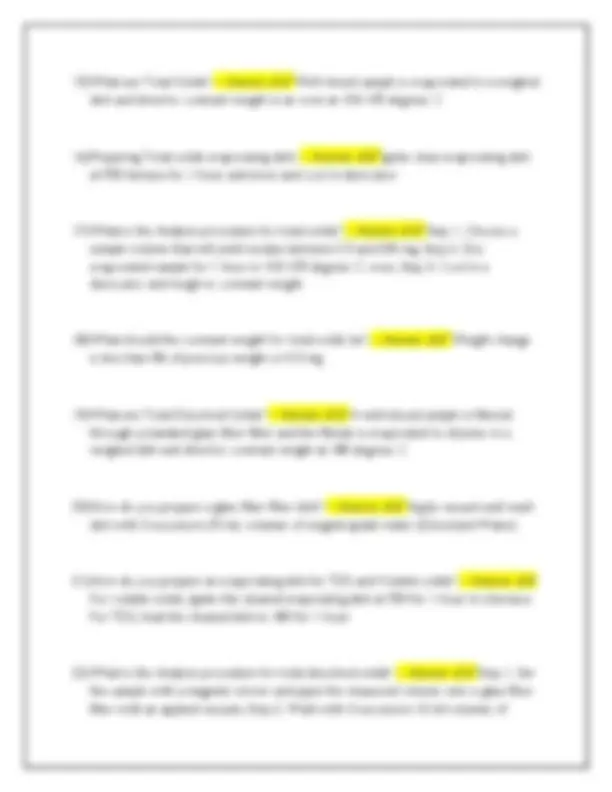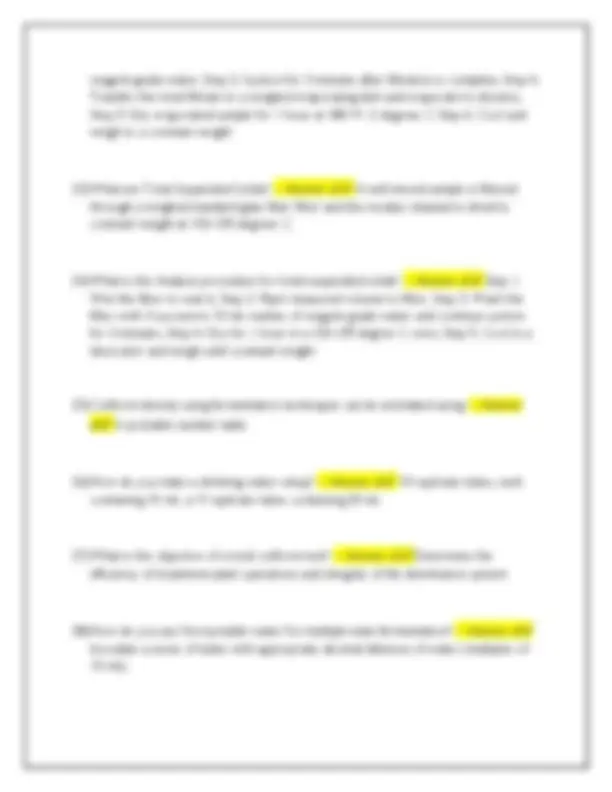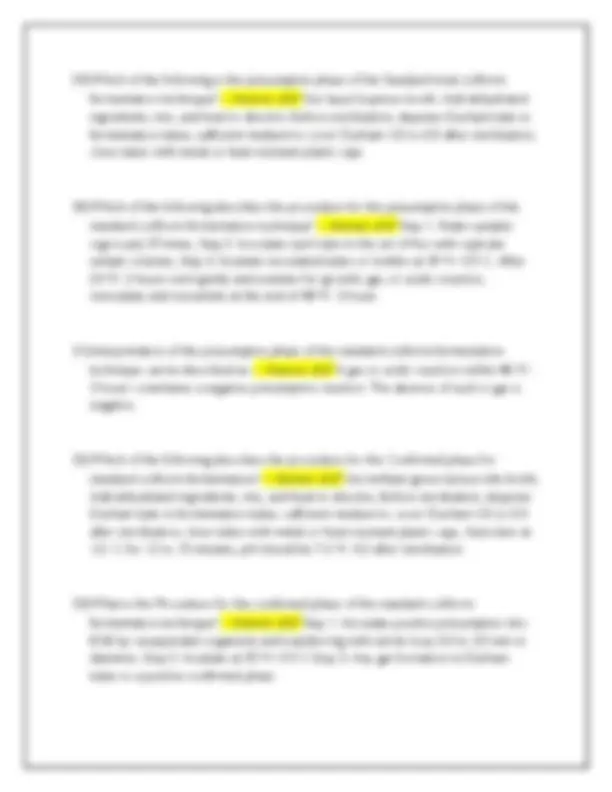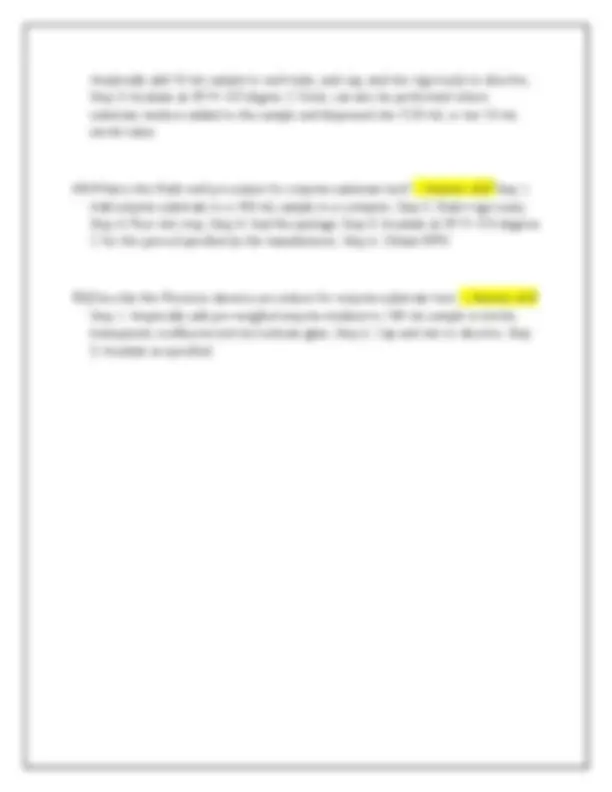






Study with the several resources on Docsity

Earn points by helping other students or get them with a premium plan


Prepare for your exams
Study with the several resources on Docsity

Earn points to download
Earn points by helping other students or get them with a premium plan
Community
Ask the community for help and clear up your study doubts
Discover the best universities in your country according to Docsity users
Free resources
Download our free guides on studying techniques, anxiety management strategies, and thesis advice from Docsity tutors
CWEA GRADE 1 LAB ANALYST PRACTICE TEST 3 QUESTIONS WITH CORRECT ANSWERS
Typology: Exams
1 / 8

This page cannot be seen from the preview
Don't miss anything!





reagent-grade water, Step 3. Suction for 3 minutes after filtration is complete, Step 4. Transfer the total filtrate to a weighed evaporating dish and evaporate to dryness, Step 5. Dry evaporated sample for 1 hour at 180 +/- 2 degrees C Step 6. Cool and weigh to a constant weight
Aseptically add 10 mL sample to each tube, and cap, and mix vigorously to dissolve, Step 3. Incubate at 35 +/- 0.5 degree C Note: can also be performed where substrate media is added to the sample and dispensed into 5 20 mL or ten 10 mL sterile tubes